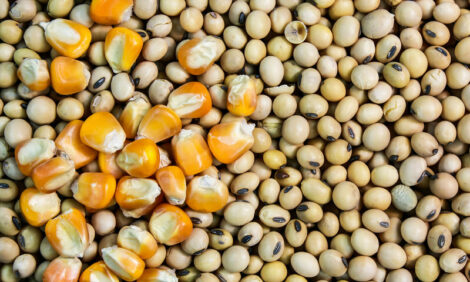



Give ’Em A Chance
ARKANSAS - How to get more for calves at the auction barnIn an auction barn, every feeder calf is judged for a few seconds before its value is determined. Cow-calf producers who sell at auction should take note of research by the University of Arkansas that documented distinct traits and management practices that can add dollars. In 2000 and 2005, the University worked with USDA Livestock Market News reporters to track data from 17 markets across the state.
The results showed the largest differences in price were due to health, muscle score, breed and body fill.
“There was a $42 (per hundredweight, or cwt.) spread between the healthy cattle and the sickest calf,” says Tom Troxel, animal science associate department head at the University of Arkansas.
Muscle score was second with a $38.24/cwt. spread between the heaviest and lightest muscled animals, followed by breed type with a $33.28/cwt. gap between the top and bottom money-getters.
“We’ve found that breed type and color were extremely important in determining the price of lightweight calves, but as calf weight increased to 750 to 800 pounds (lb.), breed type and color became less important,” Troxel says. “For lightweight calves, buyers use breed type and color to predict performance. When they’re bigger, they can see performance.”
“Muscling was one factor that, regardless of calf weight, was an extremely important influencer of price,” he says.
During the five-year span, only four breeds increased in premiums as compared to the average. Angus cattle increased $3.26/cwt. from their $0.45/cwt. advantage in 2000. Now at a $3.71/cwt. premium, they ranked first out of all breed types, followed by Angus-Hereford and Angus-Charolais crosses.
“We’ve seen a desired trend to increase marbling scores and quality,” he says. “The breeds or breed combinations that are thought to do that have increased in value.”
Buyers are looking for cattle that fit their customers’ end targets.
“We’re seeing more and more cattle sold on a grid today than we did eight, nine years ago, and less commodity beef,” Troxel notes. “Buyers want to purchase cattle that will perform on a grid.”
Nine breeds or crosses decreased in value from 2000 to 2005.
Certified Angus Beef LLC (CAB) monitored premiums paid for cattle of known Angus genetics versus non-Angus counterparts for eight years. From the spring 1999 to spring 2006, the premium for Angus cattle more than doubled from $13.76 to $32.63 per head on an average 700-lb. steer.
Ten auction market managers across the U.S. reported prices for calves of similar muscling, health and body condition, to isolate the apparent effect of Angus genetics on price.
Producers may be taking notice of the Angus market advantage as well.
“In 2000, 33% of the cattle in our survey were of Angus breeding. In 2005, that increased to 43%,” Troxel says.
That’s not the only difference in the two studies. After one of the driest years on record, Troxel expected the 2005 sale weights would be down.
“The opposite was actually true; we had more heavyweight calves,” he says. “I would attribute that to improved genetics.”
Simple management fixes could add profits to salebarn sellers’ pockets.
They include castrating bull calves, tightening up breeding and calving seasons and using polled genetics, Troxel says.
“Simple things like sire selection, castration and timing can return dollars pretty quickly,” he says. “The big side of it is muscle thickness and not producing any small-framed, light-muscled cattle. Sire selection is the long-term way they can really increase calf values.”
Troxel says those who make focused improvements can see a real benefit, even if they don’t follow the cattle through the feeding phase. That may become more important than ever before.
“If you look at the last 10 to 15 years, profitability at the cow-calf level has been pretty good. As long as they’re making money,” he says, “producers don’t ask questions like, ‘Why did my calf get 20 cents less than my neighbor’s?’ Even though we still have relatively high calf prices, the net return isn’t as high as it used to be. Producers are starting to pay attention to that.”
TheCattleSite News Desk


